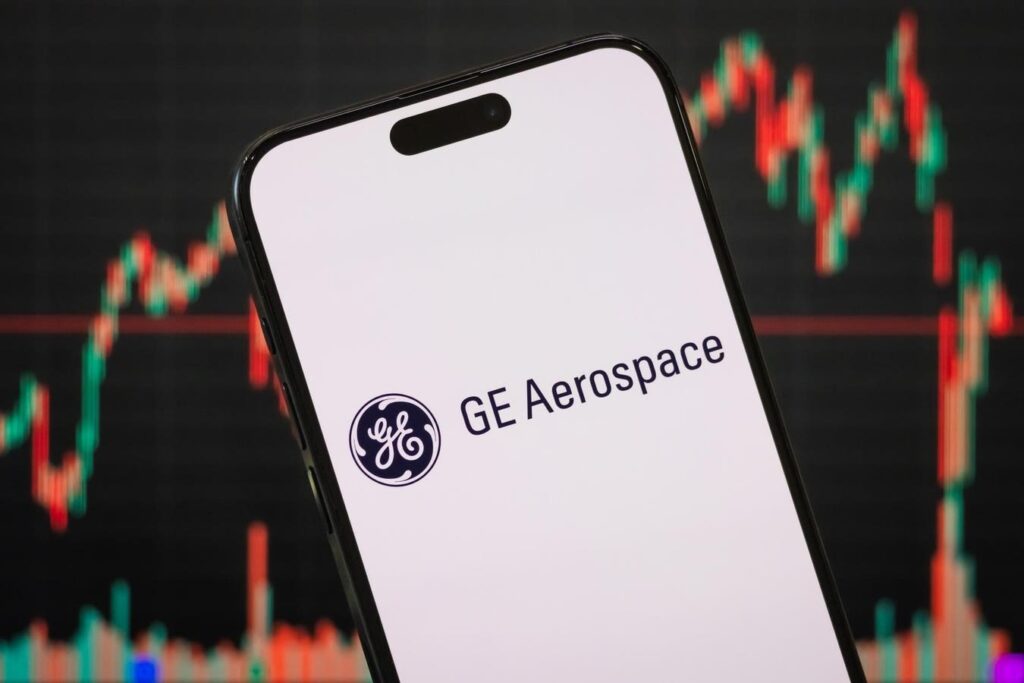GE Aerospace (NYSE:GE) stock has risen by almost 40% this year, significantly surpassing the S&P 500, which has decreased by 1%. This remarkable surge prompts an important question for investors: Is GE stock now overvalued, and could it face a significant correction, possibly by 25-30% or even 40% to below $150?
Well, here’s the concern – at roughly $235 per share, GE stock seems overpriced. It is trading at nearly 60 times its free cash flow over the last twelve months. To put this into perspective, this results in a meager cash flow yield of about 1.7%. For comparison, Nvidia, a leader in the AI sector with over 80% average revenue growth in recent years, trades at a lower multiple of 50 times cash flow. GE’s revenue growth, at about 9%, while better than 5% in recent years, is insufficient to rationalize such a lofty multiple. The price you pay is crucial. We have created the Trefis High-Quality Portfolio with a focus on relative valuation. Importantly, HQ has achieved a >91% return since its inception and has outperformed the S&P, Nasdaq, and Dow — all of them. Also, see – What Sparked UNH Stock Crash?
Why Is GE Stock So Expensive?
GE’s current valuation arises from a significant restructuring that has redirected the company towards high-growth sectors in commercial, military, and general aviation. After spinning off its healthcare, renewable energy, and power divisions, GE Aerospace is now benefiting from an increasing demand for its aftermarket services, including engine servicing and aircraft maintenance. This trend is projected to persist, supported by solid order inflows—$12.3 billion in Q1’25, showing a 12% year-over-year increase—and an extensive backlog of $140 billion as of Q1.
Additionally, GE has shown substantial expansion in margins. Its operating margin has surged from 12.3% in 2022 to 18.8% over the last twelve months, a remarkable 53% increase that the market has rewarded.
GE Aerospace also enjoys a leading position in the large commercial engine market, facing only a few competitors such as Rolls-Royce, Safran, Honeywell, and Pratt & Whitney. Its CFM56 and LEAP engines power a considerable portion of the world’s commercial fleet, effectively binding airlines into decades of GE’s high-margin maintenance, parts, and service operations. Changing engine suppliers is a complex and expensive task for airlines, reinforcing GE’s revenue stream.
What’s Next for GE Stock?
While GE’s revenue growth may remain in double digits, the rapid rate of margin expansion is probably not sustainable. Therefore, GE should be valued more in alignment with other companies achieving 10-15% revenue growth.
Even when contrasted with a firm like Microsoft, which trades at about a 48 times free cash flow multiple and boasts 15% annual growth, GE’s current valuation appears stretched. At Microsoft’s multiple of 48x cash flow, GE’s stock price would be closer to $190 per share. Investors should reflect on whether GE deserves an even lower multiple considering its growth trajectory.
Why GE Stock Might Still Be a Reasonable Investment
Despite the apprehensions surrounding its high valuation, there are reasons GE Aerospace might continue to perform favorably. Its performance is intrinsically linked to aviation volumes, spanning commercial air travel, domestic flights, international routes, and cargo transport. A strengthening economy, potentially driven by alleviating trade tensions and declining inflation, could significantly enhance business and leisure travel as well as global trade.
Increased flight activity directly correlates to a heightened demand for new aircraft and engines, allowing airlines to expand their fleets and replace aging planes. Crucially, more flight hours also mean increased demand for engine maintenance, parts replacement, and service revenue—GE’s most lucrative segment. Every additional hour an engine is operational contributes directly to GE’s aftermarket revenue, as airlines heighten utilization rates and flight frequencies.
Understanding Risk-Reward Through Comparison
Comparing GE with firms like Nvidia and Microsoft is not about identifying direct equivalents but understanding the relative appeal and risk-reward dynamics of an investment. When evaluating GE, investors should consider its potential returns against alternatives such as holding cash (earning interest) or investing in a broad market ETF like the S&P 500.
Utilizing “anchor” assets like Nvidia and Microsoft, which also trade at elevated multiples, offers critical insight into GE’s risk-reward profile. These comparisons assist investors in determining whether the anticipated return on GE stock justifies the associated downside risk, especially considering that these anchor stocks provide more compelling growth stories. This analytical method is vital for making informed investment choices.
Regardless of the trade-off, investing in a single stock carries risks. Conversely, the Trefis High Quality (HQ) Portfolio, featuring a selection of 30 stocks, has a proven track record of reliably outperforming the S&P 500 over the previous four years. What contributes to this? Collectively, HQ Portfolio stocks have achieved superior returns with reduced risk compared to the standard index, demonstrated in HQ Portfolio performance metrics.
Read the full article here


